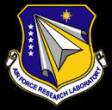AFRL updates Next Generation Intelligence Collection and Analyses BAA
 On July 19, the Air Force Research Laboratory posted a broad agency announcement for Next Generation Intelligence Collection and Analyses (BAA-RIK-2015-0006). For the best chance of FY 19 funding, the agency recommends that white papers be submitted by November 1, 2018.
On July 19, the Air Force Research Laboratory posted a broad agency announcement for Next Generation Intelligence Collection and Analyses (BAA-RIK-2015-0006). For the best chance of FY 19 funding, the agency recommends that white papers be submitted by November 1, 2018.
The Air Force Research Laboratory – Information Directorate (AFRL/RI) is soliciting white papers under this BAA for research, design, development, test, evaluation and experimentation of innovative technologies and techniques for Next Generation Intelligence Collection and Analyses.
The objective of the BAA is to develop, demonstrate, and evaluate new sources and methods for collecting and analyzing intelligence data. This effort is expected to provide research and development activities to enhance warfighter mission capabilities and advance baseline performance beyond what is currently considered satisfactory. Under the proposed announcement, it is anticipated that intelligence collection and analysis technologies will be used in support of Strategic, Operational, and Tactical missions. These should include, but are not limited to, Signals Intelligence, Measurement & Signals Intelligence, and Electronic Intelligence techniques.
Efforts under this program are expected to provide the DoD and other identified partners with algorithms, architectures, and system frameworks flexible enough to interoperate with any ISR (Intelligence, Surveillance, and Reconnaissance) assets necessary. This includes fusion of multiple sensors and the management of the large quantities of data generated by modern sensors (commonly referred to as “big data”). The algorithms, architectures, and framework will provide an infrastructure that is extensible to all levels of the battlespace including Air, Space, and Cyber Space.
Research and development efforts under this program are expected to result in improved capabilities for collecting and analyzing data gathered from DoD and mission partners’ intelligence assets. The effectiveness of the enhancements to software, systems, and sensors currently in operational use will be assessed through testing and evaluation activities. Technology innovations that deliver new or improved operational capabilities are of high interest. Offerors are encouraged to describe the pre-conditions that are necessary for the proposed techniques to work effectively.
Work is encouraged in, but not limited to, these focus areas:
-
Sensor Fusion for Intelligence – Develop methods and models for rapidly processing data from multiple sources while maintaining data integrity. – Design, produce, and demonstrate software that will manipulate information from multiple sources for display to users in a command and control environment. – Demonstrate, test, and measure performance of the designed interconnected sensors, algorithms, and other system components.
-
Data Signature Analysis – Develop Signature Analysis capabilities at multiple mission levels to support the integration of a multitude of common sensor technologies. – Design detailed collection procedures, feature extraction and pre-processing steps, and baseline classifier development for signature analysis. This should include the baseline classification results using the maximum likelihood classifier. – Demonstrate, test, and evaluate the performance of the proposed models and algorithms.
-
Technologies for Big Data Management – Integrate and test Big Data information management technologies and techniques. This includes producing mission needs analyses and risk and vulnerability assessments. – Develop information management and transmission methods for big data to achieve cross-agency interoperability, collaboration, and shared awareness across DoD and partner agencies. Facilitate interoperability and data discovery to aid in net-centric capabilities across service and agency boundaries. – Enable transition of data-sharing and collaboration frameworks across the government to achieve greater levels of situational awareness, and enable more accurate and timely decision-making. – Investigate methods for sensor data compression, transmission, and delay mitigation.
Full information is available here.
Source: FedBizOpps








